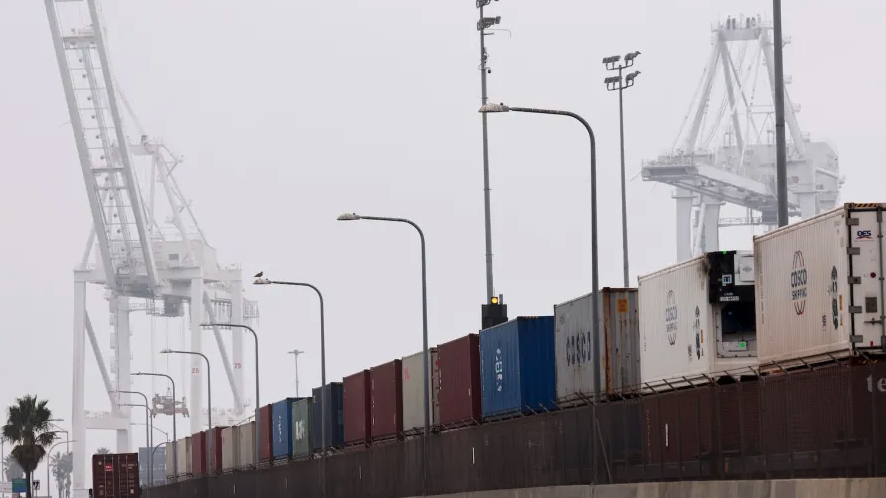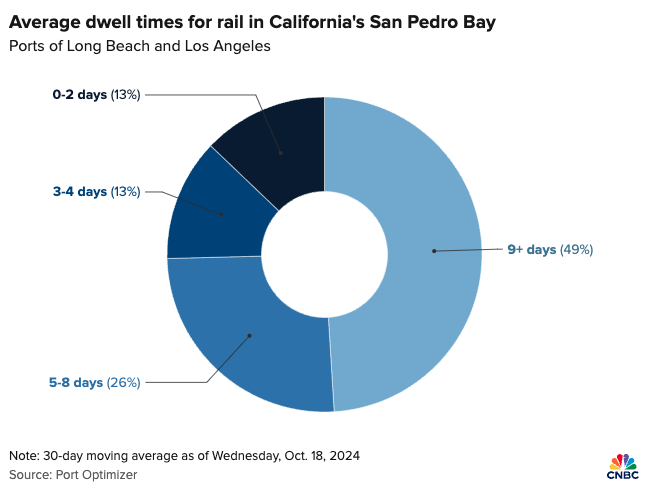Port of Los Angeles Freight Rail Delays Reach Two-Year High

Freight rail delays at the Port of Los Angeles have reached a two-year high, primarily due to record imports driven by recent diversions from East Coast and Gulf Coast strikes, as well as ongoing issues in the Red Sea. These delays are causing significant congestion, with nearly half of the containers bound for freight rail waiting over nine days to depart.
In September, the port recorded its highest-ever monthly volume, handling 954,706 twenty-foot equivalent units (TEUs). However, this surge has led to a backlog, with about 20,000 rail containers sitting idle while awaiting loading. Executive Director Gene Seroka has emphasized that, despite these delays, overall port operations remain efficient and unaffected.
Prior to the spikes in container volumes during August and September, the average rail dwell time in the San Pedro Basin, which encompasses both the Port of Los Angeles and Long Beach, was approximately four days. Currently, that figure has escalated significantly, prompting daily discussions with rail operators to address the increasing dwell times.

Looking ahead, Seroka is monitoring several key factors that could impact container growth and the port’s efficiency: the early Lunar New Year, the upcoming U.S. presidential election, and the overall strength of the economy, which remains robust according to recent port data.
October is anticipated to bring another strong month, with projections indicating container volumes in the mid-800,000 TEU range. The market's activity is further fueled by concerns over tariffs and the potential implications of the presidential election outcome.
At the Port of Long Beach, rail dwell times are also elevated at seven days; however, port officials report no significant congestion or bottlenecks. Executive Director Mario Cordero noted that recent high volumes have not adversely impacted operations at Long Beach, which has experienced a 26% increase in on-dock rail movement.
Concerns over the increased dwell times and their potential impact on the retail and chemical industries have been echoed by industry leaders. Executives are stressing the need for continued collaboration among stakeholders to maintain cargo fluidity and mitigate delays as the holiday season approaches.
Source: CNBC